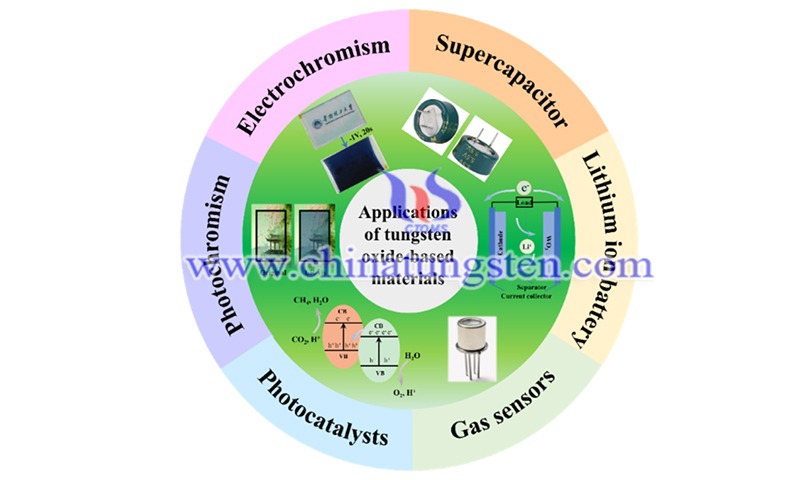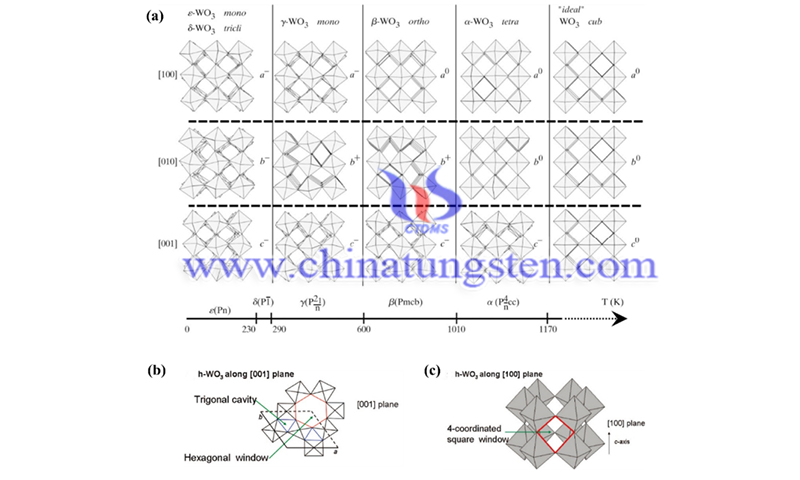Advances in Electrochemical Energy Devices with Tungsten Oxide-Based Nanomaterials
- Details
- Category: Tungsten's News
- Published on Sunday, 15 January 2023 00:02
Tungsten oxide-based nanomaterials hold multiple applications in constructing various energy storage devices, especially in electrochemical energy devices. The materials’ electrochromic and optical change devices have been intensively investigated in energy conservation. Based on the close connection of device structures and operating mechanisms between these two major applications, bifunctional devices of tungsten oxide-based materials with energy storage and optical change functions have drawn our vision.

The depletion of energy and environmental degradation have become a growing concern. In order to slow down the rate of resource depletion, it has become very important to use efficient devices to save energy. Therefore, energy conversion systems shall be used in combination with high-efficiency energy storage devices to store the converted energy. It is well known that supercapacitors and lithium-ion batteries are two types of widely used efficient energy storage devices (ESDs). In addition, electrochromic devices (ECDs) are a well-known and efficient application to control the intensity of sunlight and the heat passing through it by changing the transmittance.
Supercapacitors (SCs) are a promising energy storage device due to their unique advantages such as high-power density, ultra-long cycle life (over 105 cycles), fast charging speed (within tens of seconds) and excellent performance at low temperatures. There are two main types of SCs, electric double-layer capacitors and pseudo-capacitors.
Typically, the capacitance of a pseudo-capacitor is higher than that of an electrical double-layer capacitor. Lithium-ion batteries (LIBs) are commonly used in portable electronics and electric vehicles because of their high energy density. Nowadays, the typical anode material for LIBs is graphite because of its low cost, stable electrochemical properties and good structural stability. However, its theoretical specific capacity of 372 mA.h.g-1 is relatively low with the expanding energy consumption demand, thus limiting the further use of LIBs. Transition oxide materials, such as tin oxides, cobalt oxides, and tungsten oxides, are considered as potential alternatives to replace graphite due to their high specific capacities.

Reference: Han W, Shi Q, Hu R. Advances in electrochemical energy devices constructed with tungsten oxide-based nanomaterials[J]. Nanomaterials, 2021, 11(3): 692.
- Tungsten Manufacturer & Supplier, Chinatungsten Online: www.chinatungsten.com
- Tungsten News & Prices of China Tungsten Industry Association: www.ctia.com.cn
- Molybdenum News & Price: news.molybdenum.com.cn
- Tel.: 86 592 5129696; Fax: 86 592 5129797; Email: sales@chinatungsten.com



 sales@chinatungsten.com
sales@chinatungsten.com